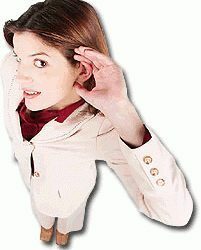20 Examples of Kinesic Language
Miscellanea / / July 04, 2021
Kinesic Language
The kinesic language It is one that is part of non-verbal communication. Also called body language, It is fundamental and generally acts as a complement to verbal language, but at times it can become as or more significant.
Kinesic language includes gestures, gaze, body movements, and posture. For example: a hug, a caress, a wink.
There are fields of activity in which the kinesic language acquires enormous relevance, such as in acting. For a time there was what was called "silent cinema", which told stories only through the gestures and movements of the actors. Charles Chaplin, Buster Keaton or Mary Pickford are some of the most famous exponents of the domain of the Kinesic language.
Examples of kinesic language
Here are some examples of the use of kinesic language; its expressive value is indicated in parentheses:
- Blow (annoyance, tiredness)
- Quickly open and close your eyes (shame, modesty)
- To sigh (melancholia)
- Put your hands together under the chin as a prayer (appeal)
- Raise your thumb (approval)
- Wink the eye (complicity)
- Shake your hand up and down (equivalent to 'hurry up')
- Shake your hand towards yourself (equivalent to ‘come closer’)
- Crossing the index finger in front of the lips (equivalent to ‘silence’ or ‘do not disclose it’)
- Turn the head from side to side horizontally (denial).
- Move your head up and down (affirmation).
- Frown (disappointment or 'I don't understand')
- Yawn (boredom, sleepy)
- Cover your mouth with your hand (equivalent to 'I shouldn't say it')
- To laugh (joy, comedy)
- Smile (bliss, satisfaction)
- Cry (grief)
- To blush (embarrassment, discomfort)
- Crossing your legs (equivalent to 'I take time for this')
- Draw circles with your hand on the abdomen (equivalent to 'how rich' or 'how hungry').



